Story and photos by Shabna Ullah
Tucked away five miles from the main road, St Lawrence, Parika was bustling with activity at the koker, and judging from the beautiful homes and well-kept surroundings you know the residents are ambitious.
With a population of about 200, the farming community is thriving in terms of economic ventures and does not have an unemployment problem. In fact, farmers and businesspersons even have difficulty finding workers at times.
Most of the residents are engaged in cash crop, ground provision, fruit or cattle farming, while a couple of them have started planting rice for the second crop. They have started the business after a 10-year break.
If residents are not into major farming, they at least have a kitchen garden. They benefit from the services of two grocery shops, the Guyoil fuel station as well as two beer gardens and a liquor restaurant.
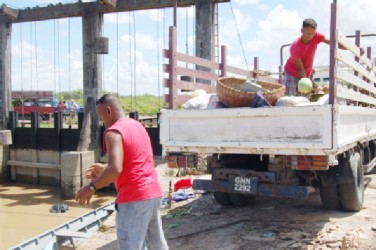
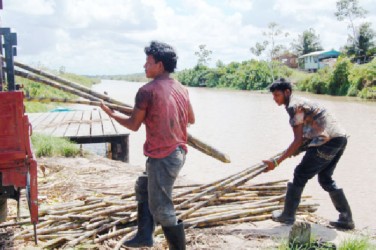
Employment is also provided at the two sawmills in the village owned by the Bissoons’ and the Sookrams’. A third sawmill has been closed for some time now.
An elderly resident, 73-year-old Walter Persaud said, “There is no time for too much idling in here; everyone hustling… We even have to bring persons from other places to work here.”
Even at his age he still works operating a boat which takes persons to tour the various islands.
Main thoroughfare
St Lawrence is on the “main thoroughfare by water. People would come from all over and use the services offered here.” Farmers would also use the landing to access their farms and to bring out produce.
According to Persaud, “It is more economical and safer to use this point. Close to the stelling the water is very rough.” Residents who travel from the islands to transact business on the coast would leave their boats at the two landings before joining land transport.
Naamawattie Bishundaya, 63, operates a landing service from her boathouse. She charges a “landing fee” of $300 per day. She started the service when she moved from Bartica over 17 years ago. She has also provided a shed and seating accommodation for her customers.
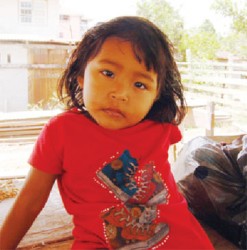
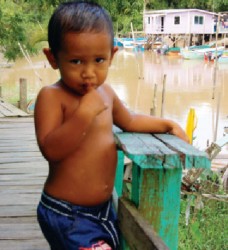
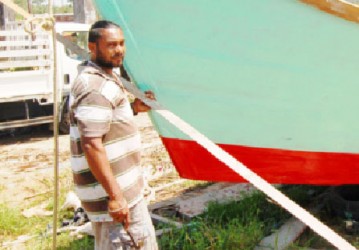
Amjad Khan, 30, a boat-builder for over eight years was hard at work. He learnt the skill from his father and uses it to earn a living. His business is set up under a shed close to the koker where many other activities take place. His main job is to build boats, but that does not happen so regularly. He is certain about getting boats to repair though, and as he puts it, “The main thing is that I’m getting work.”
Some residents had just arrived from Moruca in search of work, and were sitting under the shed. They had been hired by Dereck Budram to tend his farm located at eastern Hog Island and will also be staying in that area. During the mid-morning visit a few men were also consuming alcohol under the shed. They were quick to tell this reporter that they had already worked at their farms earlier.
The health post in the village serves residents from neighbouring communities, including the riverain areas like Hog Island, Aliki and Bonasika. The staff also conducts school and home visits.
Students attend the primary school in the village and when old enough would go to secondary school at Zeeburg, Stewartville or Leonora.
Offloading produce
At the koker, a boat belonging to Kissoon ‘Kishore’ Lokenauth, 60, had just come in from the farm. Waryck De Camp and other workers were offloading produce including ground provisions, cane and water coconuts and were taking some to his house. They returned to the boat and loaded the rest of the cane into a canter truck. Another boat had also brought in a large quantity of watermelons that were being loaded onto another truck.
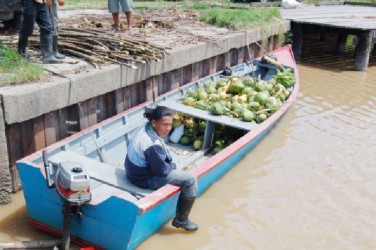
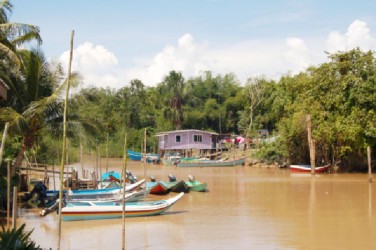
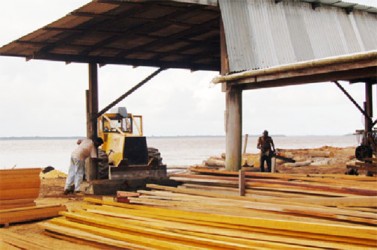
Lokenauth, plants a “couple acres of a special cane” called ‘Morning Glory’ which he supplies to persons to make cane juice for sale. He is said to be the largest cane and coconut farmer in the area and also operates a cane juice business at his home. He sells a two-litre bottle of the juice for $200. Referring to his produce, he commented, “Life easy now compared to years back, because customers can call and most know what they want. They even negotiate prices before they get here.”
Originally from an island called Waipatosh or Little Fort Island, he “grew up in farming” which was his parents’ only means of earning an income.
De Camp who has been working fulltime with Lokenauth had also tried his hands at gold mining and construction work in the interior. The 22-year-old who considers himself an “all-rounder” is aiming to acquire some land to start farming on his own. He attended Stewartville Secondary but dropped out in third form because he “didn’t like school.” He would also assist his father, a small cash crop and cattle farmer.
For recreation, De Camp and the other youths would play cricket on the street or in the neighbouring Present Hope Village. They would also go swimming at the mini beach in the village.
Mixed community
A mixed village owned by two brothers, Samuel and Henry Lanferman, St Lawrence was described as being “peaceful.” Samuel owned the northern section. He sold most of it to the Bissoons who were originally from Uitvlugt. Another part was sold to the Boodhoos.
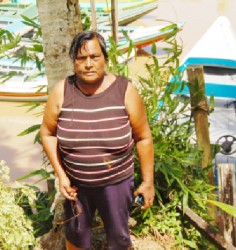
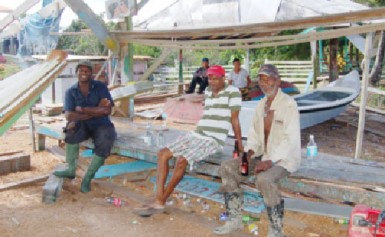
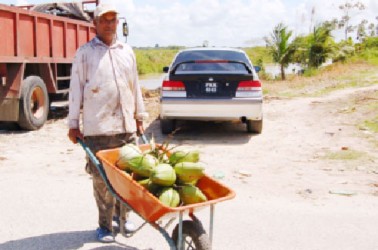
Lionel ‘Archibald’ Seepersaud whose grandmother was a Lanferman was willing to share the village’s history. The former headmaster at Hague Back Primary is fondly known by all as ‘Teacher Archie.’ He rode to work on his motorcycle. Seepersaud who operates the Guyoil fuel station said the land for the school and church was donated by Henry Lanferman.
It was first given to the missionaries to establish a church. At the time, there was no school in the village and students had to walk to Blake two villages away for an education. But it happened that in 1950 Henry Lanferman’s daughter fell into the creek that ran alongside the school and almost drowned. Luckily she was rescued just in time. This incident prompted Henry to ask the missionaries to construct a school. Subsequently the villagers came together and built a thatched roof structure with the frame and furniture made from wood they had cut.
At first, the school which had branches for walls and mud floor was called St Lawrence Christian Catholic School. Eventually the government took over payment of the teachers and thereafter constructed a wooden building where church services were also held. The two buildings are situated beside each other. Tombs are located at the back of the school because “that was the church compound.”
Henry distributed the rest of the land among his children who have all migrated. Residents’ land stretch almost one mile from the river to the road.
Years ago, Seepersaud said, donkey carts transported their produce while only one hire car operated in the area. Residents would walk to their destinations, but to get to the train station a few miles away 20 passengers would be packed in the car. Some persons also used to ride out on bicycles which were kept at the police station.
Achievements
Speaking about achievements in the village, Seepersaud said the step at the koker was built by one Mr Krishna of Hog Island mainly to facilitate residents of the riverain communities.
He was also overjoyed that Florida-based residents, Naresh and Meranda Lokenauth have purchased the plot of land next to the school to provide recreational facilities. The playground would be equipped with swings, slides and other items for the students. They have also refurbished a library room and will supply books, racks, fans and computers to get it started by December.
In addition, residents have planned to construct a shed and provide benches for a waiting area at the health post. The materials for the project will be donated by Bissoon and Sookram’s sawmills.





